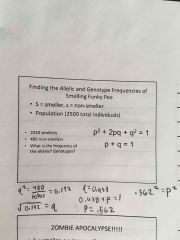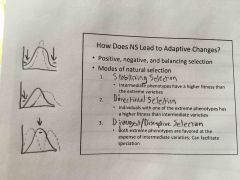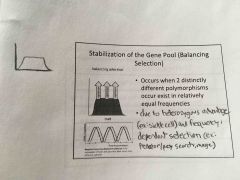![]()
![]()
![]()
Use LEFT and RIGHT arrow keys to navigate between flashcards;
Use UP and DOWN arrow keys to flip the card;
H to show hint;
A reads text to speech;
16 Cards in this Set
- Front
- Back
|
Sexual Selection |
Selection of traits that increase an individuals access to reproduction |
|
|
Intersexual selection |
Males evolve traits to attract females Female choice Sexual dimorphism |
|
|
Intrasexual selection |
Competition within genders Males develop antlers to fight w other males (no female choice) |
|
|
Levels of Biodiversity |
Ecosystem, species, genetic |
|
|
Threats to Biodiversity |
Pollution, invasive species, over exploitation, habitat loss/degradation, climate change |
|
|
Darwin’s 5 Postulates |
1. Variation within a population 2. Some traits are inherited 3. Overproduction of offspring (more than habitat can support) 4. Differential Reproduction (well suited individuals survive and produce more offspring) 5. Survival/Reproduction NOT random (over time, favorable traits accumulate in a population) |
|
|
Pattern vs. Process |
Observed evolutionary change vs. mechanisms that produce pattern |
|
|
Adaptation |
Inherited trait that increases fitness |
|
|
Evolution |
Change in genetic composition from one generation to the next Common descent (all life has a common ancestor) |
|
|
Vertical vs. Horizontal gene transfer |
Passed from parent generation vs. exchanged w another (non parent) cell |
|
|
Variation comes from |
Combo of alleles and mutations |
|
|
H-W Equilibrium |
1. No natural selection 2. No gene flow 3. No mutation 4. No genetic drift 5. No non-random mating |
|
|
HW |

Back (Definition) |
|
|
Artificial selection |
Directional selection by humans |
|
|
Modes of NS |

Back (Definition) |
|
|
Balancing selection |

Back (Definition) |

